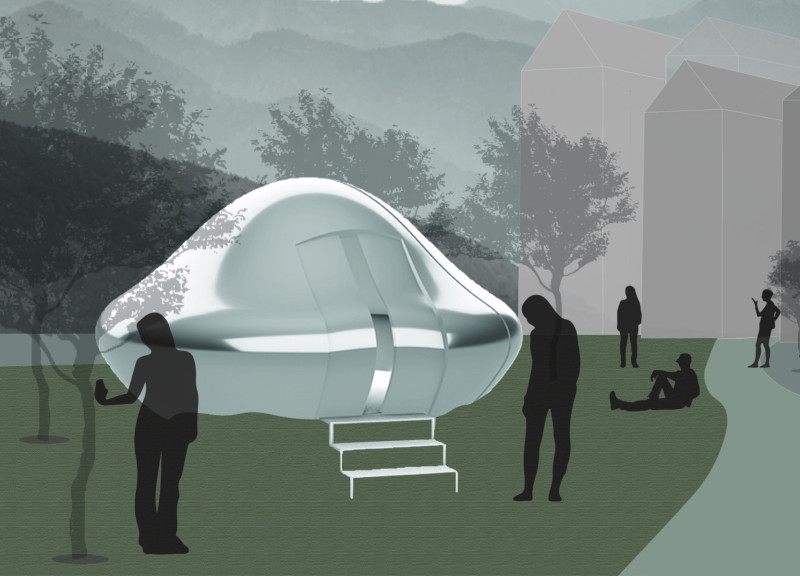5 key facts about this project
The meditation cabin offers a thoughtful blend of design and purpose, creating a peaceful space for relaxation and reflection. Positioned in a calming environment, the structure serves to help individuals escape the pressures of everyday life. Its primary function is to provide a setting that encourages meditation and mindfulness. The overall design focuses on fostering tranquility through careful organization of space and sensory components.
Therapeutic Elements
Light therapy plays a key role in the design, using colors such as green, blue, and purple that are known to ease tension and promote calmness. This choice reflects an understanding of how colors can influence mood, enhancing the experience of those who use the cabin. In addition, sound therapy can be included to enrich the acoustic landscape, allowing for an immersive atmosphere that supports relaxation and thoughtfulness.
Symbolic Geometry
At the heart of the design is the Fruit of Life symbol, which serves as a central motif. This geometric pattern shapes the circular walls throughout the cabin, conveying themes of connection and unity. The inclusion of fractal geometries introduces visual complexity that invites users to interact with their surroundings. This engagement fosters a deeper relationship between the individual and the space, making it suitable for contemplation.
Modular Design Approach
Various design modules enhance the flexibility of the structure. Key elements include the Fruit of Life symbol (Module A), the Seven Days of Creation (Module B), and the Hexahedron (Module C). By combining these modules—like Module B and C or A, B, and C—the interior spaces can be configured in diverse ways. This modularity allows the cabin to adapt to different user experiences while maintaining a focus on wellness and reflection.
Every detail of the cabin is crafted to support its function as a space for introspection. Wall patterns echo fractal designs, creating layers of visual interest that draw users into a thoughtful atmosphere, inviting them to pause and reflect.



















































